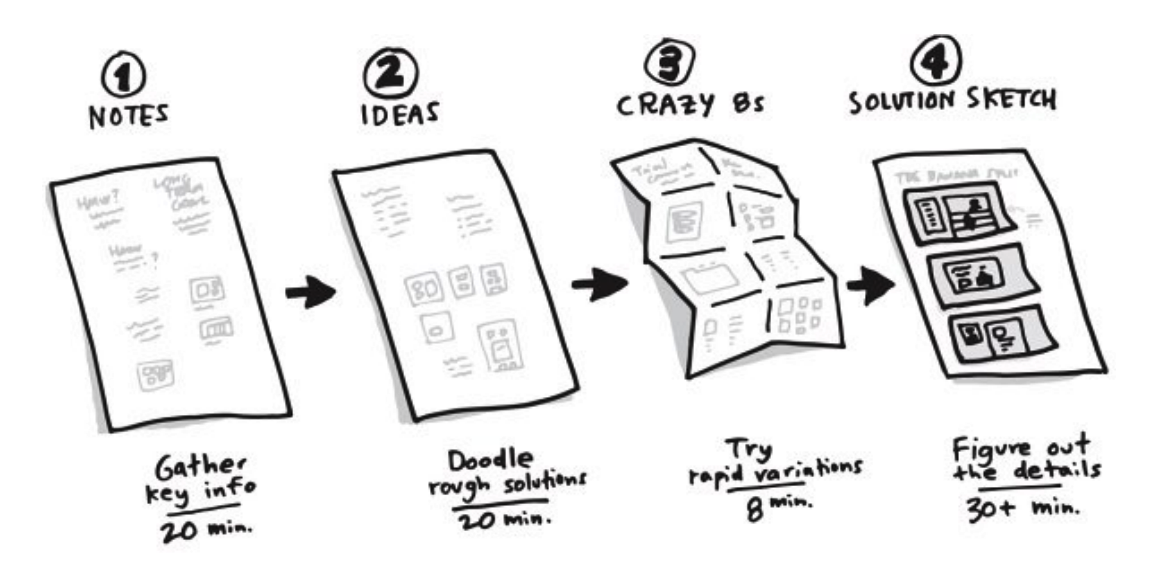Sprint by Google Ventures [Speed Summary]

- Sprint: How to solve big problems and test new ideas in just five days
- Author: Jack Knapp, John Zeratsky, and Braden Kowitz
- Publisher: Transworld
- Publication date: March 2016
Google does them. Airbnb and Facebook do them. McKinsey does them. Government agencies do them. Start-ups do them. We do them…
Everybody is doing ‘design sprints’ these days – the accelerated design-thinking approach to innovation and problem-solving.
And now Google has just revealed its blueprint for running design sprints in a much awaited new book penned by Jack Knapp and colleagues – ‘Sprint: How to solve big problems and test new ideas in just five days‘.
Sprint is a distillation of insights from 100+ design sprints run with Google Ventures – and the basic idea is design-thinking on speed.
Design thinking is the ‘test-and-learn’ approach to innovation based on the idea that innovation is the source insight, rather than insight as the source of innovation. Traditionally, corporate innovation – which has a 90%+ failure rate – starts with the market research or insights department setting out to learn about a market and its opportunities. This learning is then used to kick off and guide the innovation process – often involving ideation workshops and concept development – culminating in a testing phase.

Design-thinking switches ‘learn and (then) test’ around; you learn about a market by testing rapid prototypes first, not by focus groups and surveys. Typically this involves fast-protoyping design solutions using empathy (experiencing what the user experiences) and testing these prototypes in order to learn. Based on the learning, you adapt or iterate solutions to make them better.
Sounds simple? The design-thinking revolution in innovation has many champions, including us. But design-thinking has an Achilles heel; it can be lengthy. A design-thinking project can take many months to deliver solutions. Enter ‘design-sprints’ of the Google kind. A design-thinking process condensed into five days for a team of up to seven participants (that Google dubs «Ocean’s Seven», and notes – from experience – that teams larger than seven are doomed to failure; so if you have more than seven; create two teams).
- Facilitator: responsible for running the sprint
- Decider: a sprint is not a democracy; the decider calls the shots and makes decisions if unanimity is absent – usually the project sponsor/person who will be judged on the outcome
- Finance Expert: the voice of the money
- Customer Expert: the voice of the customer
- Tech/Logistics Expert: the voice of firm capabilities
- Design Expert: the voice of the product
- Marketing Expert: the voice of advertising and promotion
The Five Day Sprint

Day 1 (Monday): Structured Discussion Day to create a path for the sprint week. In the morning, start at the end and agree the goal. What would success look like? What problem(s) would it solve for your company? Invite experts at the company (and external) to share what they know
Day 2 (Tuesday): Solutions Day. The day starts with inspiration: a review of existing ideas to remix and improve. The core principle of design thinking is that ‘all design is redesign’. So each team member individually creates redesign variations (Crazy 8s technique) and then creates a rough ‘sketch prototype’ of their preferred remix

DAY 3 (Wednesday): Select and Storyboard Day. In the morning, the team critiques the sketch prototypes and decides which one to progress or which ones to combine and progress. In the afternoon, turn the sketch into a customer storyboard from product discovery to purchase, use and disposal
Day 4 (Thursday): Prototyping Day. ‘Fake it before you make it’ – create a prototype that you can put into customers hands and learn from their feedback. If it’s on a screen (website, app, software, etc.) – use Keynote, PowerPoint, or a website-building tool like Squarespace. If it’s on paper (report, brochure, flyer, etc.) – use Keynote, PowerPoint, or word processing software. If it’s a service (customer support, client service, medical care, etc.) – write a script and use your sprint team as actors. If it’s a physical space (store, office lobby, etc.) – modify an existing space. If this is difficult, consider creating a prototype advertisement, promotional website or prototyping packaging or a brochure
Day 5 (Friday): Test Day. Get your prototype into 5 pairs of customer hands in individual test sessions (five customers will identify around 80% of all problems). Observe reactions and capture feedback with followup questions. Learn what and how to improve
The BG Take
Sprint is practical and hands-on containing – along with the accompanying website TheSprintBook – a comprehensive set of techniques, tools and tips to run your own design sprint. Even if you don’t drink the design-sprint kool-aid, Sprint is a great resource for running workshops, and conducting customer interviews. And if you don’t want to buy the book, Google’s free design-thinking PDF report contains much of the content. If there’s an issue with Sprint, it’s that even though Google has crunched the multi-month design-thinking process into just five days, five full days will still be a tall order for many businesses – until you add up all the time saved in focus groups, surveys, meetings, and workshops. But even if 5 days appears unrealistic, the key insights offered in Sprint will resonate for all innovators:
- Instead of jumping right into solutions, take your time to mapout the problem and agree on an initial target. Start slow so you can go fast.
- Group brainstorming is broken, but there is a better way. Work independently to make detailed options for possible solutions, then discuss, vote and optimise.
- Avoid groupthink, endless debates and decision deferral by using voting and a Decider to make crisp decisions that reflect the team’s priorities.
- Avoid developing ‘concepts’ – instead adopt a ‘prototype mindset’ and ‘fake it before you make it’ with quick and easy prototypes
- Get your rough and ready prototypes into customers hands and observe their honest reactions in order to learn, adapt and optimise
Recommended.



